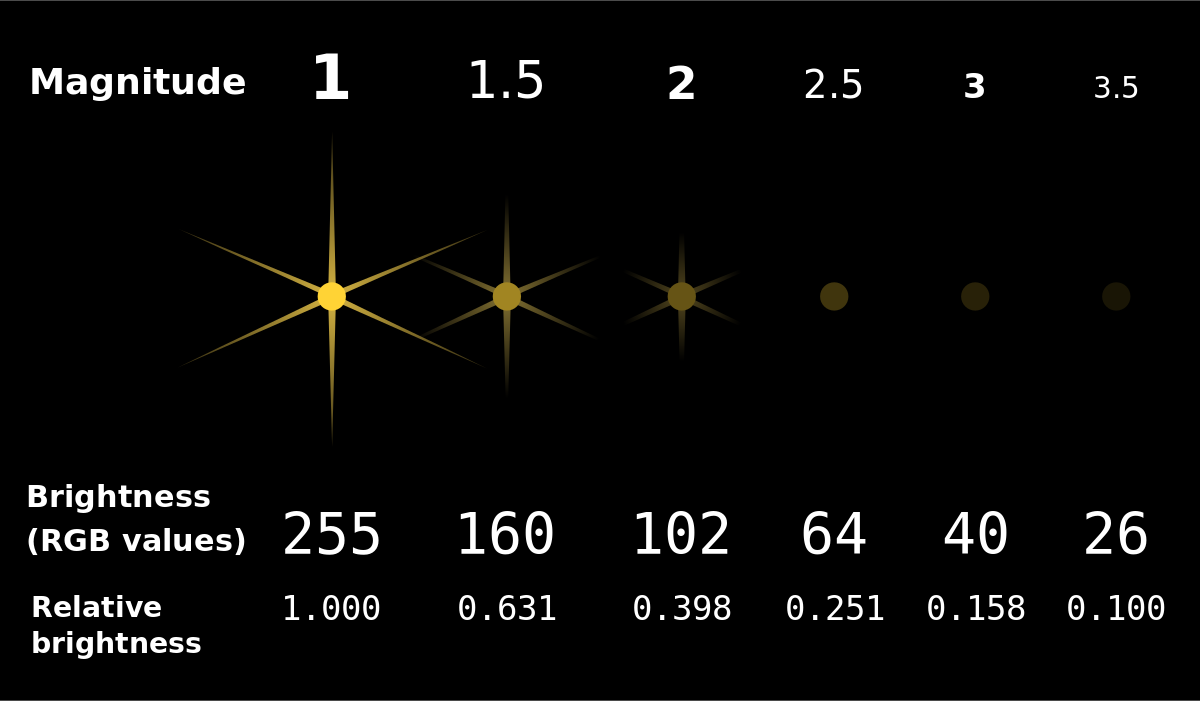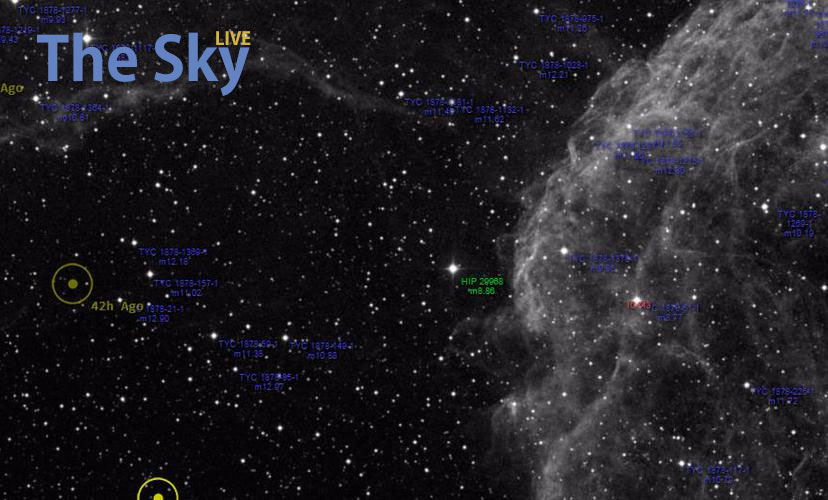-
Welcome to B4X forum!
B4X is a set of simple and powerful cross platform RAD tools:
- B4A (free) - Android development
- B4J (free) - Desktop and Server development
- B4i - iOS development
- B4R (free) - Arduino, ESP8266 and ESP32 development
You are using an out of date browser. It may not display this or other websites correctly.
You should upgrade or use an alternative browser.
You should upgrade or use an alternative browser.
Android Question Astro library
- Thread starter BugNot
- Start date
-
- Tags
- astro astronomical
- Similar Threads Similar Threads
I believe the units are astronomical magnitude - but beyond that I don't know.

 en.wikipedia.org
en.wikipedia.org

 theskylive.com
theskylive.com

Magnitude (astronomy) - Wikipedia

How Bright is The Moon?
Information about the current brightness of The Moon and predicted light curve up to the year 2100
Upvote
0
Do you mean the moon phase? I think the lib should have a function to directly get moon phase.% brightness
For a full moon, the magnitude watching from earth is around -13.
Upvote
0
Maybe I am wrong. But eventually you have to redefine what exactly you are looking for.
The Astro Library gives you the parameter "Moon Age".
Assuming that a lunar cycle lasts about 29.5 days:
New Moon: Day 0
Full Moon: Day 15
With this you can calculate the approximately visible size, even if it does not have to be 100% accurate.
If this is what you want, the "light" corresponding the moon's size...
As far as I know a value for the luminosity can not be delivered by Astro Library in a way you want then.
The given magnitude refers to the astronomical brightness scale:
Luminosity Details: (the values you mentioned are correct)
The brightness of the full moon varies with its distance from Earth by up to 17 per cent, or about 0.2 mag, and averages -12.5 mag on the astronomical brightness scale.
The brightness of the crescent moon is not about 50 per cent relative to the full moon, as one might initially think, but only about 11 per cent, since only that portion of the diffusely reflected light reaches the Earth that is reflected back approximately at right angles to the solar radiation, and the surface relief of the moon also casts shadows. With a very narrow crescent, the brightness is only three to five percent of that of the full moon. In addition to the bright sunlit part of the moon's surface facing the Earth, you can often see the darker part, which is not illuminated by the sun itself but by the Earth, which is illuminated by the sun. This reflection of the Earth's light, the so-called ash-grey moonlight, accounts for about 0.01 percent of the total moonlight at full moon.
Compared to the full moon, the sun (-26 mag) is up to about 400,000 times brighter. The sunlight reflected by the brightest planet Venus (-4.4 mag) has about 1,500th the brightness of the moon, and the light emitted by the brightest fixed star Sirius (-1.5 mag) reaches Earth with about 25,000 times less brightness than the full moon. On a clear night, its illuminance on Earth is about 0.2 lux. The differences mentioned appear to us to be considerably dampened, because the sensory impressions of the eye are subjectively perceived according to their differences in intensity scaled approximately logarithmically.
Source: German Wikipedia
The Astro Library gives you the parameter "Moon Age".
Assuming that a lunar cycle lasts about 29.5 days:
New Moon: Day 0
Full Moon: Day 15
With this you can calculate the approximately visible size, even if it does not have to be 100% accurate.
If this is what you want, the "light" corresponding the moon's size...
As far as I know a value for the luminosity can not be delivered by Astro Library in a way you want then.
The given magnitude refers to the astronomical brightness scale:
Luminosity Details: (the values you mentioned are correct)
The brightness of the full moon varies with its distance from Earth by up to 17 per cent, or about 0.2 mag, and averages -12.5 mag on the astronomical brightness scale.
The brightness of the crescent moon is not about 50 per cent relative to the full moon, as one might initially think, but only about 11 per cent, since only that portion of the diffusely reflected light reaches the Earth that is reflected back approximately at right angles to the solar radiation, and the surface relief of the moon also casts shadows. With a very narrow crescent, the brightness is only three to five percent of that of the full moon. In addition to the bright sunlit part of the moon's surface facing the Earth, you can often see the darker part, which is not illuminated by the sun itself but by the Earth, which is illuminated by the sun. This reflection of the Earth's light, the so-called ash-grey moonlight, accounts for about 0.01 percent of the total moonlight at full moon.
Compared to the full moon, the sun (-26 mag) is up to about 400,000 times brighter. The sunlight reflected by the brightest planet Venus (-4.4 mag) has about 1,500th the brightness of the moon, and the light emitted by the brightest fixed star Sirius (-1.5 mag) reaches Earth with about 25,000 times less brightness than the full moon. On a clear night, its illuminance on Earth is about 0.2 lux. The differences mentioned appear to us to be considerably dampened, because the sensory impressions of the eye are subjectively perceived according to their differences in intensity scaled approximately logarithmically.
Source: German Wikipedia
Last edited:
Upvote
0
